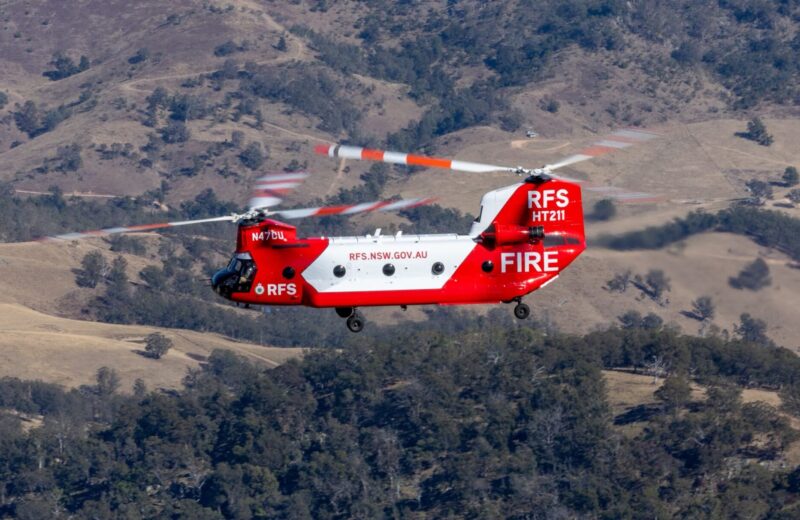Firefighting Chinook helicopter delivered to NSW, Australia

A CH-47 Chinook helicopter, configured for firefighting missions, has been delivered to the Rural Fire Service (RFS) of New South Wales, Australia. The $9m, tandem-rotor, heavy lift helicopter will be based in Richmond, at the foot of the Blue Mountains in New South Wales.
Billed as Australia’s largest firefighting helicopter, the CH-47 joins an existing fleet of rotary and fixed wing aircraft. Capable of carrying up to 11,000L of water or retardant, its payload is similar to a large air tanker.
The Chinook will assist firefighters on the ground using a bucket of up to 10,000L. An 11,000l internal tank will be installed during the winter of 2024, which will enable it to fly night-time aerial firefighting missions.
Jihad Dib, minister for Emergency Services, New South Wales (NSW), government said: “The RFS Chinook will be the first helicopter of its kind to be permanently based in Australia. This helicopter will be a valuable asset and is one of a number of proactive steps we are taking to ensure we are prepared for bushfires in the summer ahead.”
The helicopter brings a new capability to the RFS, he added. “The future ability to use it at night means we can directly attack fires at times when weather conditions are more favourable and fire activity is typically lower.”
Resources to support the aircraft are being provided by the NSW government. Based in Richmond, the helicopter will be moved around the state depending on the fire risk.
Rob Rogers, commissioner, RFS said: “The Chinook carries a similar load to a 737 large air tanker but can fill up and turn around faster, protecting people and homes from fires. We’re very grateful to the Royal Australian Air Force, with which the RFS has had a strong working relationship for over a decade, for its assistance in delivering this helicopter in time for the coming fire season.” Pictured (courtesy of Boeing) is a H-47 helicopter.
The CH-47 is powered by two Lycoming T55 turboshaft engines, mounted on each side of the helicopter’s rear pylon and connected to the rotors by drive shafts. The aircraft’s counter-rotating rotors eliminate the need for an antitorque vertical rotor. This enables all the power to be used for lift and thrust. The ability to adjust lift in either rotor makes it less sensitive to changes in the centre of gravity, important for the cargo lifting and dropping, such as when deployed on firefighting missions.
Meanwhile, the National Transportation Safety Board (NTSB) investigators are probing the mid air collision of a Bell 407 helicopter and a Sikorsky S-64E helicopter, which were deployed on a fire-fighting mission in Southern California. The accident claimed the lives of three people.






